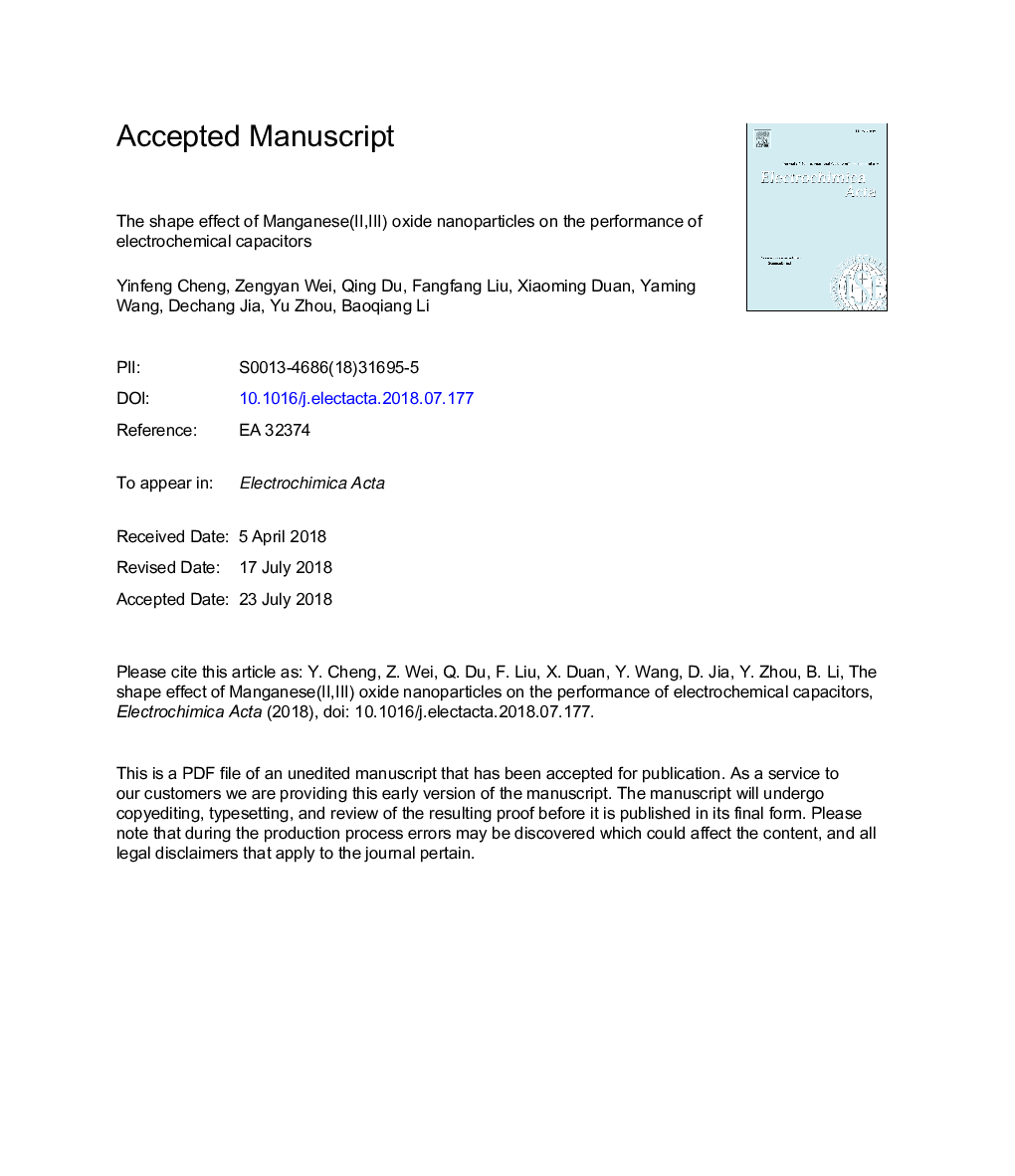| Article ID | Journal | Published Year | Pages | File Type |
|---|---|---|---|---|
| 6601977 | Electrochimica Acta | 2018 | 37 Pages |
Abstract
Manganese(II,III) oxide (Mn3O4) with various shapes including square prisms, polyhedra and tetragonal bipyramids are selectively synthesized with the mediation of fatty acids at nanoscale (<20â¯nm). Among all nanostructures, Mn3O4 tetragonal bipyramids show the largest gravimetric capacitance of 304â¯Fâ¯gâ1 with excellent rate capability and long-term cycling stability. In contrast, Mn3O4 polyhedra show relatively large intercalation capacity and poor stability, which could be related to the abundant low-coordination sites (edges, corners and defects) exposed on the surface. Transmission electron microscopy analysis reveals that the capacitance loss is caused by the dissolution of Mn3O4. Electrochemical analysis shows that the iR drop increases during cycling, probably due to the deterioration of the electric contact between Mn3O4 nanoparticles and the conductive matrix in the electrode.
Related Topics
Physical Sciences and Engineering
Chemical Engineering
Chemical Engineering (General)
Authors
Yinfeng Cheng, Zengyan Wei, Qing Du, Fangfang Liu, Xiaoming Duan, Yaming Wang, Dechang Jia, Yu Zhou, Baoqiang Li,
